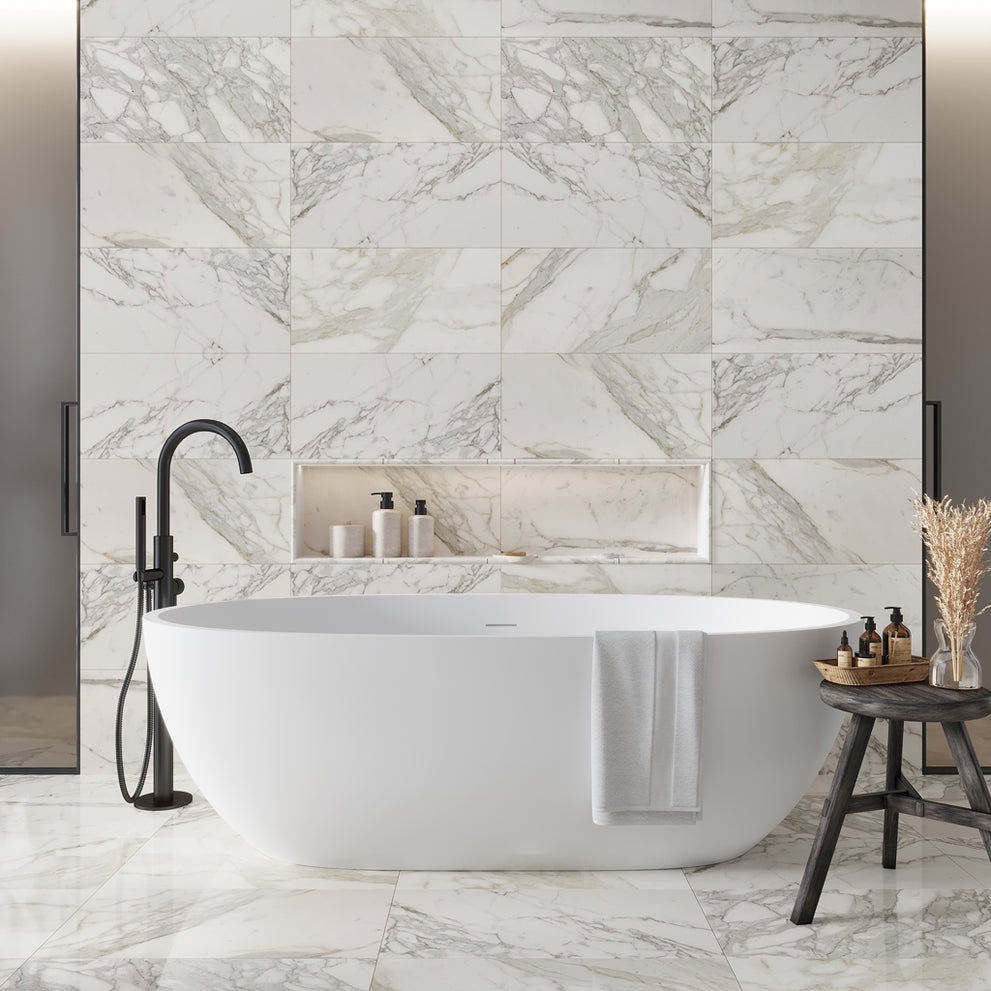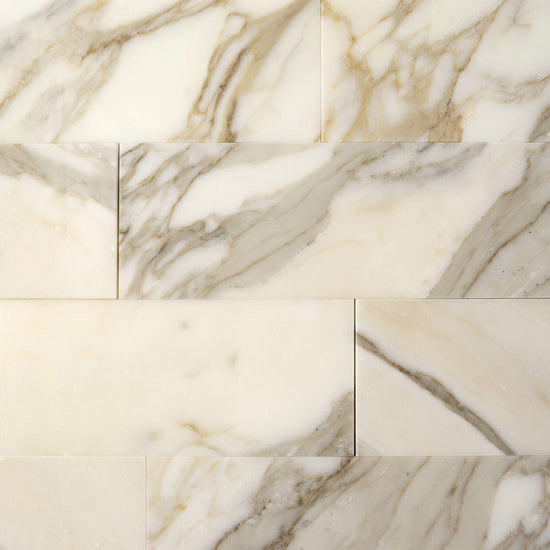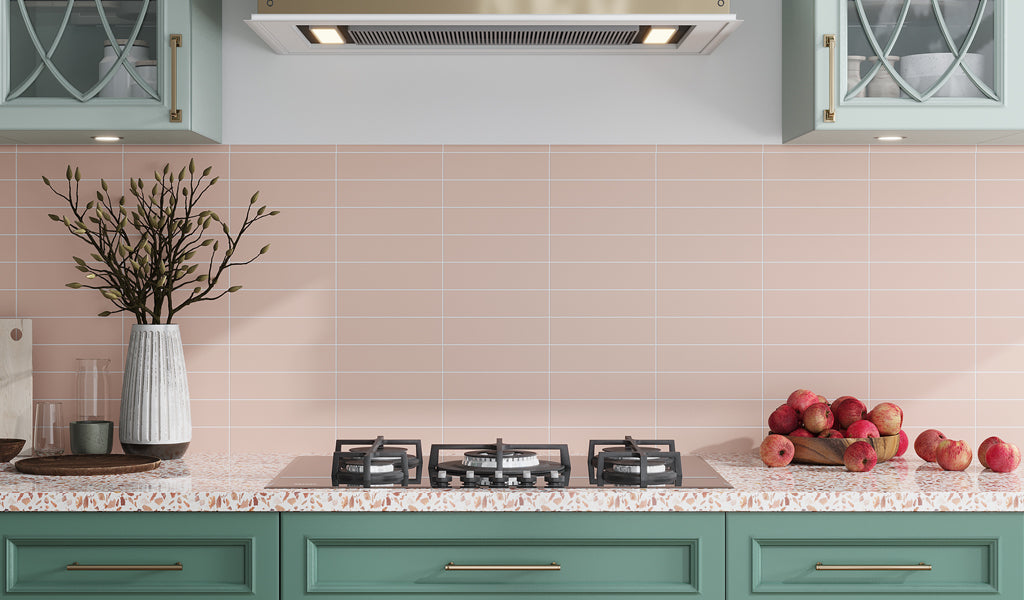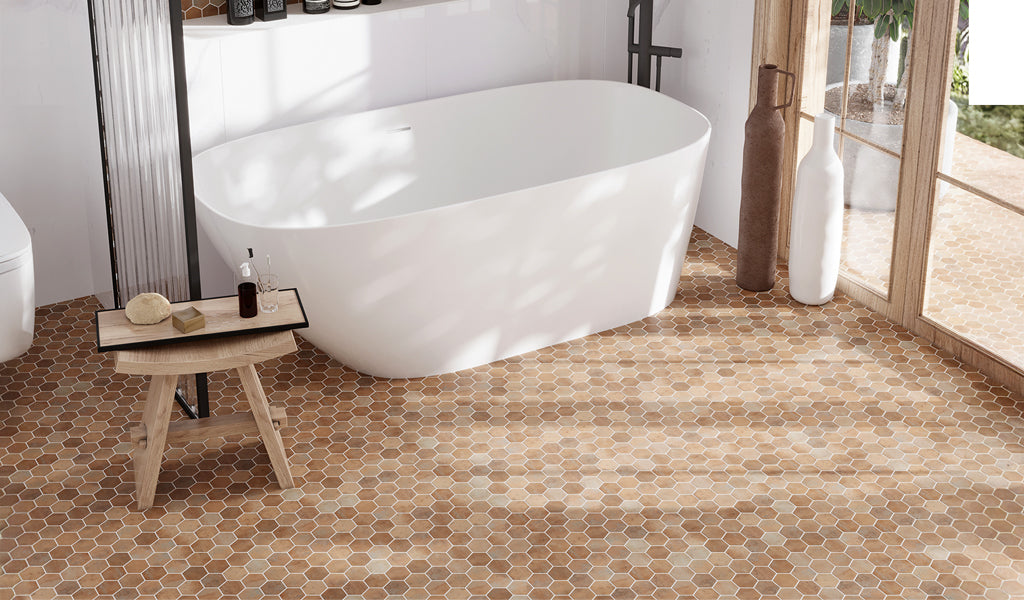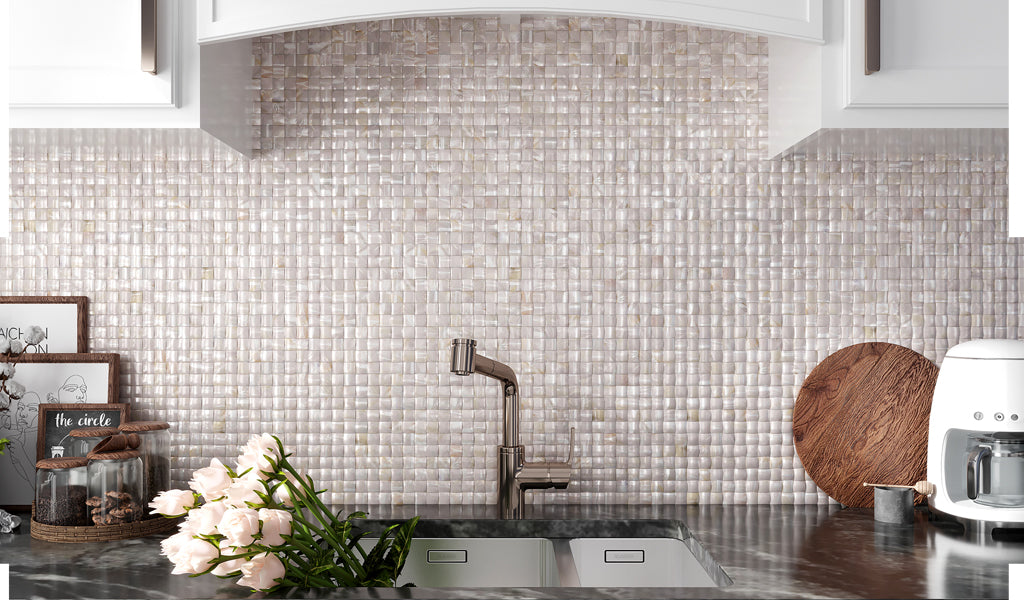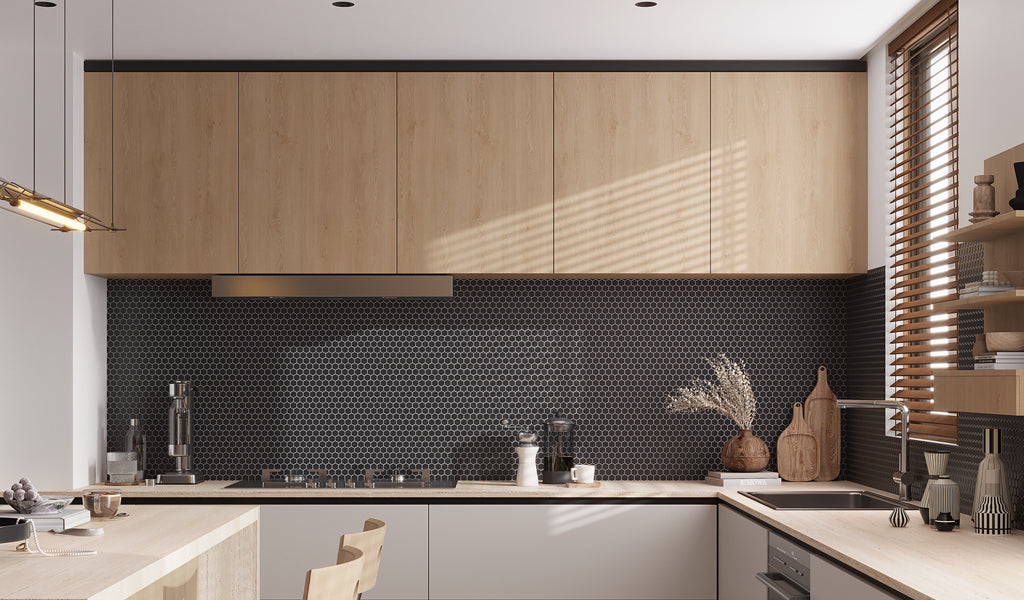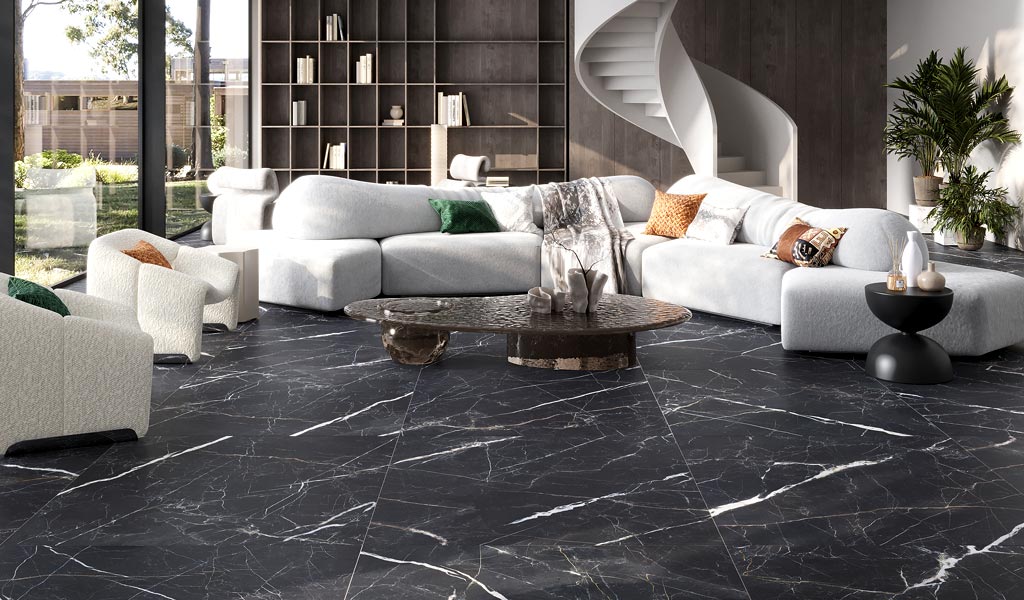The Ultimate Guide How to Clean Marble Floors: Achieving a Gleaming Finish
Dec 03, 2024
The upkeep of marble tile is simpler than you’d think. With regular cleaning, stain treatment, and scratch prevention, your flooring can last a lifetime. Learn how to clean marble floors and the tricks for removing set-in stains with our in-depth guide.
Understanding Marble Tile: Characteristics and Care Needs
Marble is a remarkably beautiful stone available in different types, including Calacatta, Crema Marfil, Thassos, Carrara, and Nero Marquina. Despite the enormous forces at work creating it, marble is surprisingly more fragile than other common materials like glass and ceramic tile. It is notoriously prone to staining, so much so that spilling cranberry sauce on unsealed floor tiles can eat away at the smooth surface and form an etch.
If you're going to invest in gorgeous tilework, knowing how to clean marble floors the right way should be top of your to-do list. The truth is, regular marble floor cleaning and sealing are the best ways to improve resistance and maintain lasting appeal. Stained floor tiles are unsightly and make it a lot tougher for your interior to look its best.
Assessing the Condition of Your Marble Tile Floors
Whether installed as an entryway, bathroom, or kitchen floor tile, the first step to caring for your marble flooring is to periodically assess its state. This will help you cover the following:
1. Identify the type of stain and damage
Despite regularly cleaning marble floors, they may occasionally suffer from inconsistencies in the finish, loose or chipped joints, or noticeable scratches and marks. As for stains, taking the right actionable steps will restore the beauty of your tile. Some floors may need minor touch-ups while others may require engaging the pros depending on how intense the stains are.
2. Find out the frequency of cleaning
If your marble tile is located in a high-traffic area, you’ll properly have to dry-dust daily. This is because dust, dirt, and grit can cause minute scratches that dull marble’s sensitive surface if left unattended.
3. Determine the need for professional help
Marble flooring can change as it ages. To avoid wearing down this beautiful material by DIYing severe cases, it may be best to seek professional assistance. Restoration companies have the expertise on how to clean marble floors and tools to safely and effectively retain the luster of your tile.
Step-by-Step Cleaning Techniques for Marble Floors

So, how to clean marble floors to maintain a pristine interior? Many marble tiles can be cleaned with a solution of warm water and mild dish detergent. Keep acidic cleaners off your flooring as they can break down the stone’s sealant.
Daily or Weekly Cleaning
- Use a soft dust mop and avoid anything abrasive that runs the risk of creating scratches on your floor surface. Friction from dragging dirt or sand around with a vacuum poses the risk of more damage.
- Follow up dusting by cleaning marble floors with a solution of warm water and dishwashing soap to remove any final traces of dust and dirt. Be wary of soap that may contain citrus extracts or essential oils. A good practice is to dunk the mop in the solution and wring any access liquid until it is just damp.
- For oil and grease residue or dry spills, mix a stone-specific pH-neutral cleaner with warm water. When using this solution, make sure the room is well-ventilated.
- Gently wipe, and if the cleaning solution becomes discolored, change as needed so you don’t smear dirt across your clean marble floors.
- As soon as you’ve mopped the entire floor, give your tiles a follow-up rinse with clean water to remove any residue from the cleaning solution. Dry and shine with a soft microfiber cloth to prevent watermarks and streaks.
Deep Cleaning and Stain Removal
- If you’re wondering how to clean marble floors in a way that removes stubborn stains, you’re going to need a poultice of baking soda, water, and hydrogen peroxide or a few drops of ammonia.
- Spread the paste over the stain, cover with plastic wrap, and let it sit and dry for 24 hours.
- After 24 hours, remove the protective wrapping, flush the area with lots of water, and clean marble floors as usual.
Sealing Marble Floors for Lasting Protection
Besides daily dust-mopping and deep cleaning once a month, how to clean marble floors so they stand the test of time? The short answer is to seal your tiles!
This critical step that should be taken during installation and every 6-12 months significantly increases stain and moisture resistance, giving you time to clean up before any damage occurs. There are two types of sealants readily available at any hardware store and online:
Topical Sealer: This type of sealant coats the face of marble tile with a protective layer, providing a glossy or matte finish.
Impregnating Sealer: This sealant provides premium long-term protection because it soaks into the pores of the stone, forming an invisible repellent without altering the appearance of the marble.
Over time, both sealants lose their effectiveness and bond with the stone. The frequency of resealing your marble floors depends on the location and level of foot traffic. High traffic tile will most likely require resealing every 6-12 months.
When to Seek Professional Restoration Services
If your marble floors show significant wear or when stubborn stains or etch marks cover a large area, it’s time to call in a professional. With experience as their guide, they’ll know the right commercial poultice and tools to use to get the job done efficiently. Restoration services, including grinding, honing, and polishing, rejuvenate and contribute to the tile’s longevity.
Maintaining Marble Floors for Longevity

Meticulous maintenance will preserve the allure of your marble flooring and extend its lifespan. Here are some tips you can follow:
- Clean marble floors regularly: How to clean marble floors that accumulate dust, dirt, and grit quickly. A daily quick-clean with a dust mop will help remove dirt that can scratch your tile.
- Resist the edge to attack stains: Steer clear of harsh chemicals and abrasive tools as they will dull and erode the tile surface. The best way to clean marble floors is by using a neutral pH cleaner designed for natural stone.
- Add furniture protectors: Attaching protective furniture pads to prevent scratches can extend the life of your marble tile floors.
- Deal with spills and stains promptly: Treat spills right away, especially from acidic substances like citrus juice, tomato sauce, coffee, and wine. This will help prevent staining and etching. Gently blot up the stain with a clean, damp cloth and dry.
- Reseal marble for enhanced protection: Apply a sealant suitable for your flooring and reseal as recommended by the manufacturer.
- Use door mats and rugs: Place non-skid mats inside and outside at entryways to guard against abrasive dust and grit.
What to Avoid When Cleaning Marble Floors
How to clean marble floors and maintain an immaculate look is one thing. Following all the wrong steps is another and can damage your floor tile. These are some common mistakes to avoid:
- Using acidic cleaners and abrasive tools to remove tough stains will only further damage your marble floor tile. Loss of shine and dull etch marks are more likely to occur over time.
- Excessive amounts of water when cleaning marble floors can seep into the stone and ruin its sensitive surface. How to clean marble floors should be done with a damp mop instead.
- Ignoring spills as they occur can lead to deep-set stains that are a challenge to remove. A professional restoration may be required to remedy the situation.
- Going without resealing your marble tile floors increases proneness to staining. When do you know when to reapply a sealant? Pour several drops of water on your flooring and let it sit for about 10 minutes. If a dark mark or ring forms, this indicates that water has seeped beneath and a protective seal is needed.

Conclusion
If you’ve decided to adorn your space with marble tile, you’re likely aware of how challenging it can be to ensure a sleek and smooth surface. Learning how to clean marble floors properly and investing time and effort will prevent staining, etching, and dullness. This, in turn, allows you to enjoy marble’s natural patina for many years.
We hope this cleaning guide sets you on the right track to keep your interior in top shape. Explore Apollo Tile marble tile collection for stunning options you can introduce into your home. To make the selection process pleasant, our customer service team is on hand to assist you!
Frequently Asked Questions:
1. Can I use vinegar to clean my marble floors?
Acids are the enemy of any delicate and porous stone, so vinegar should never be used for cleaning marble floors. It can dull, etch, and eat away the coating of the tile.
2. How to clean marble floors without streaks?
After mopping marble floors, dry with a clean and soft microfiber cloth to avoid leaving streaks behind.
3. What is the best way to polish marble floors?
Avoid using any conventional polish on marble, as this can damage the stone or make the floors overly slippery. Instead, use a paste of baking powder and water, apply on your flooring, then rinse away with water. Thereafter, buff dry with a soft microfiber cloth.
4. How often should I seal my marble floors?
Sealing marble floors every 6-12 months will maintain protection and preserve their exquisite beauty.
5. Are there any special considerations for high-traffic areas?
When used in high-traffic areas, make sure to clean marble floors routinely. Place rugs or mats in entryways to catch dirt and puddles before they are tracked indoors. Avoid dragging furniture or heavy objects across your floors as this will also damage the top coat of marble.

